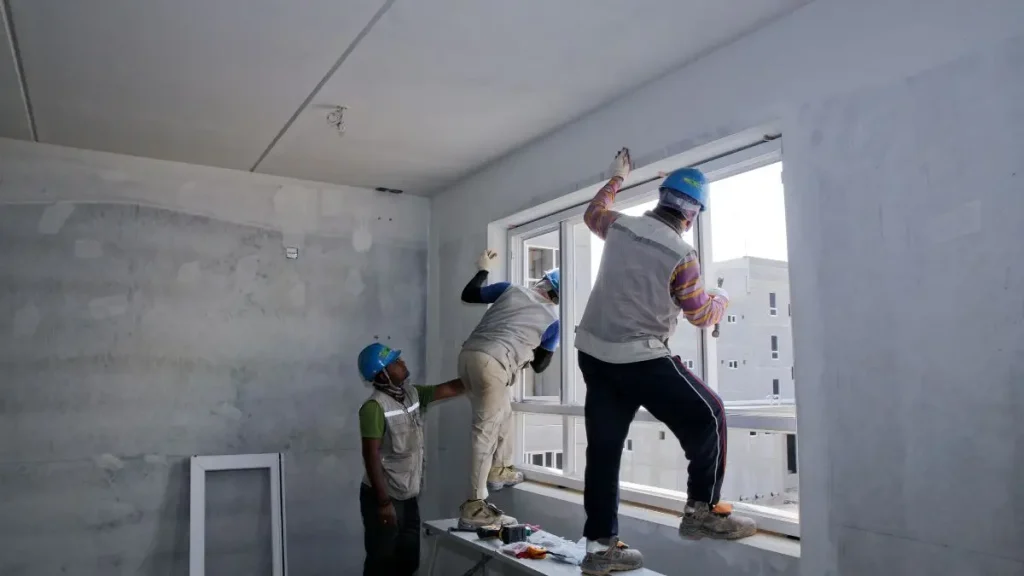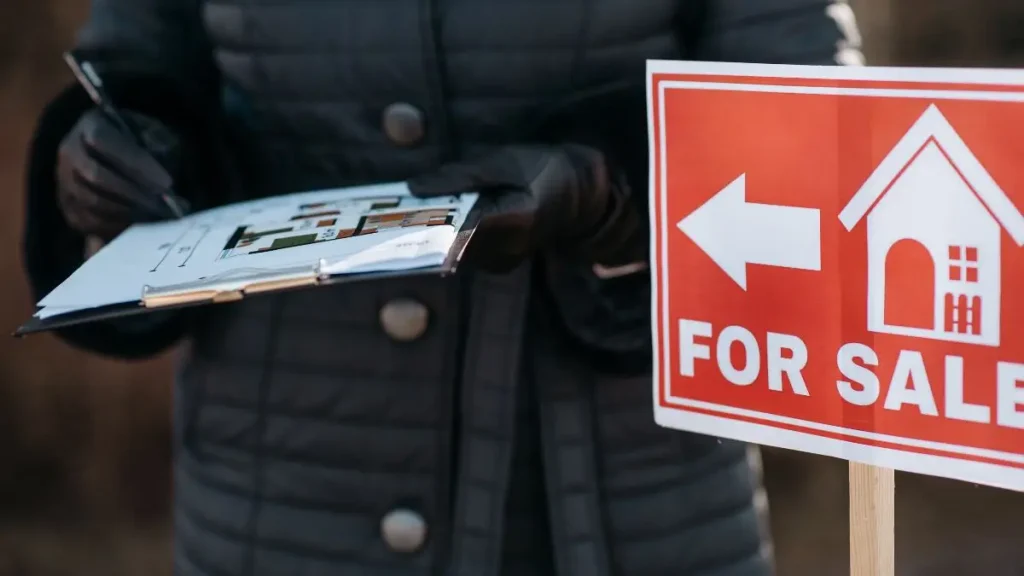Do Sellers Have to Repair Everything Found in a Home Inspection?
If you’ve ever opened an inspection report and felt your heart skip a beat, you’re not alone. I’ve been on both sides of that table — sitting with buyers who panic and sellers who take every line as a personal attack. Here’s the simple truth I tell them: an inspection is information, not a bill.
A home inspector’s job is to find and describe issues: what’s broken now, what’s worn, and what might fail soon. The report lists defects, photos, and recommended actions. It’s a snapshot of condition — useful, honest, blunt — but it doesn’t, by itself, create a legal duty to fix everything on the page.
Why does that matter to you? Because confusing the report with a legal order is the fastest way to make bad decisions. If you’re a seller, you don’t have to race to repair every cosmetic gripe. If you’re a buyer, you don’t automatically get the right to demand every update. What does matter is whether a problem affects safety, habitability, or the lender’s willingness to fund the loan.
So when you read an inspection, do this: separate the urgent from the negotiable. Flag anything that’s a safety risk (exposed wiring, major leaks, structural issues). Note items that could cause a loan or insurance to be denied. Everything else becomes a negotiation point — not a courtroom order.
Practical takeaway: treat the inspection like a map, not a mandate. Use it to steer negotiations, not to hand over a to-do list that scares you into a bad deal.
The Legal Reality: When Are Repairs Truly Required?

Let’s get straight to it — strictly speaking, no repairs are legally required after a home inspection. That line isn’t mine; even Zillow says the same in its 2024 guide on post-inspection repairs. The law doesn’t step in just because an inspector found loose tiles or a dripping faucet. The inspection gives buyers knowledge, not legal leverage.
That said, there are situations where repairs become non-negotiable. Think of them as three lanes:
1. Legal lane:
Every state or municipality has safety and disclosure laws. If the inspector finds an electrical hazard, lead-based paint, or a missing smoke detector, the seller may be legally required to fix or disclose it before closing. Skipping it can open the door to liability later.
2. Contract lane:
Your purchase agreement matters more than most people realize. If the contract says the home must meet specific livability standards or includes an “inspection contingency,” the seller’s obligations are written right there in black and white. That’s enforceable — not the inspection report itself.
3. Lender lane:
Here’s where things get practical. Lenders — especially FHA or VA — can stop a deal if major defects threaten the home’s value or safety. If the roof’s shot or there’s active mold, the bank won’t approve the loan until it’s fixed. It’s not about kindness; it’s about risk management.
So yes, the law may not demand repairs — but the system often does. If you want the sale to move forward, understanding which lane you’re in makes all the difference.
Market Dynamics: Why Sellers Still Choose to Fix Things
Now, if nothing’s strictly required, why do so many sellers still rush to patch up roofs or replace old wiring? Because selling a home isn’t just a legal exchange — it’s a negotiation built on psychology and leverage.
In hot markets, sellers hold power. They can say “as-is” and still attract multiple offers. But in balanced or slower markets, inspection findings become bargaining chips. A buyer might ask for a repair credit or push for closing delays until the issue’s resolved. I’ve seen small problems turn into deal-killers simply because neither side understood what mattered most.
Then there’s the financing factor. A lender may refuse to clear the loan until safety-related repairs are done, even if the seller insists the property is fine. So, while no law forces repairs, real-world momentum often does. The seller either fixes the issue, offers money off, or risks starting over with a new buyer.
Bottom line: sometimes you fix things not because you must — but because you want to close without drama.
If you like quick, no-fluff real estate and home repair insights, there’s a WhatsApp channel I follow that shares short weekly tips for sellers and homeowners — worth checking out if you’re in the middle of a transaction.
Reasonable vs. Unreasonable Repair Requests
If you’re buying or selling, this is where the tension usually peaks. What’s “reasonable” to one person sounds outrageous to the other.
Here’s a simple filter I’ve used for years:
- If it affects safety, structure, or livability — it’s fair to ask for a fix.
- If it’s purely cosmetic — it’s a negotiation, not a requirement.
Reasonable requests:
- Electrical hazards or exposed wiring
- Roof leaks or major structural issues
- Non-functioning HVAC or plumbing systems
- Active mold or pest infestations
- Foundation cracks or water intrusion
Unreasonable asks:
- Repainting walls because you don’t like the color
- Replacing working appliances that aren’t new
- Cosmetic floor or countertop damage
A good rule? If it could stop the home from being insurable or financed, it’s worth discussing. Otherwise, you’re in the territory of personal preference — not necessity.
Cosmetic issues like scratched floors or worn finishes often worry buyers, but they rarely justify repair demands. Minor marks can be fixed easily — check out our guide on removing scratches from hardwood floors without replacing them to see how simple it can be.
How Sellers Can Respond: Four Practical Paths
When that inspection report lands and the buyer sends over requests, take a breath. You’ve got options — and power — even if it doesn’t feel like it.
1. Fix the issues before closing: The most straightforward choice. You hire professionals, show receipts, and move forward cleanly. This route builds buyer confidence and can keep the loan process smooth.
2. Offer a seller credit: Instead of fixing things yourself, give the buyer a financial credit at closing. They handle the work after they move in. It’s fast, flexible, and often keeps everyone happy — especially if timelines are tight.
3. Reduce the sale price: If repairs are large or uncertain, adjust the price instead of micromanaging contractors. It gives buyers control and saves you post-inspection stress.
4. Sell “as-is” and stand firm: This only works if you’ve priced the home right for its condition or if the market’s hot. But remember: “as-is” doesn’t protect you from disclosure duties. You still have to be honest about known issues.
The real skill is knowing which route protects your sale and your sanity. Don’t knee-jerk; calculate.
Small updates can go a long way in strengthening your buyer’s first impression — even simple projects that improve your home’s curb appeal can make inspection findings feel less intimidating.
The Buyer’s Perspective: When to Push and When to Let Go

Let’s flip the lens for a moment. If you’re the buyer, it’s tempting to treat the inspection as a shopping list — but that approach backfires fast.
The strongest buyers I’ve worked with do this instead: they rank issues by risk. Safety, Structure, Systems, Cosmetic.
If it threatens your family’s safety or the home’s stability, push for it. If it’s a comfort or aesthetic matter, tread lightly. You can ask, but don’t hang your entire deal on a scratched cabinet door.
Another smart move? Use the inspection as a negotiation tool, not a complaint list. Say, “These three repairs impact habitability — can we find a fair middle ground?” That tone builds cooperation, not conflict.
Because here’s the reality: in a competitive market, buyers who stay reasonable close faster and stress less. You don’t have to win every repair battle to end up in a home you love — you just have to win the right ones.
Question for you: If you got an inspection report today, what would you prioritize — getting every line fixed, or closing smoothly on the right terms?
Commonly Overlooked Repair Triggers
I’ve seen deals crumble over the “invisible stuff” — the issues no one mentions until it’s too late. Most inspection reports highlight visible damage, but the real trouble often hides underneath.
Here’s what many sellers (and even agents) forget to check:
- Unpermitted renovations: That bonus room or deck without a city permit can make your home uninsurable or lower its value.
- Roof age: Even if it’s not leaking, some insurers refuse coverage once a roof passes 20 years.
- Septic and well systems: Expensive to fix, often missed in urban markets.
- Environmental hazards: Radon, asbestos, or lead paint can all trigger loan delays if unaddressed.
- HOA or condo compliance: Some associations won’t allow a sale until safety violations are cleared.
If you’re prepping to sell, these are worth pre-checking. A little proactive honesty here can save weeks of back-and-forth later — and show buyers you’re the kind of seller who handles things right.
Quick Checklist: Navigating Repairs After Inspection
When the report lands, it’s easy to freeze. But if you break it into steps, it’s not that overwhelming. Here’s the process I walk my clients through:
Step 1: Identify severity: Mark what’s safety-related, structural, or lender-required.
Step 2: Verify lender or insurance conditions: If financing depends on certain repairs, tackle those first.
Step 3: Prioritize top three issues: Don’t try to fix everything — fix what protects the deal.
Step 4: Put everything in writing: Whether you’re offering a credit, price drop, or actual repairs, document it in the contract.
Step 5: Schedule a re-inspection: Before closing, confirm the agreed-upon fixes are truly done.
This checklist looks simple, but following it can turn a messy negotiation into a smooth closing. It keeps everyone honest — and keeps emotions out of the decision-making.
If you’re still figuring out which upgrades make the biggest difference before listing, here’s a practical breakdown of which home repairs to do before selling — it helps you focus time and money where it truly counts.
Final Thoughts
Selling or buying a home after an inspection isn’t about who “wins” the negotiation — it’s about trust. The inspection simply shines a light on what’s real. What happens next depends on how both sides respond.
If you’re a seller, remember: not every issue is a dealbreaker, but ignoring safety or structural problems can cost you a good buyer. Sometimes, doing the right thing upfront builds more confidence than any discount ever could.
If you’re a buyer, focus less on cosmetic fixes and more on what could affect your long-term comfort, safety, or resale value. It’s easy to get emotional after seeing an inspection report — but keep perspective. Every home has flaws; the smart move is deciding which ones you can live with.
At the end of the day, real estate isn’t about perfection — it’s about balance. A fair deal, a safe home, and two parties who can shake hands knowing they handled things honestly.
Want more practical insights before listing or buying your next home? Explore our Home Improvement section for expert advice that helps you plan smarter, not harder.
Disclaimer: This article is for informational purposes only and should not be taken as legal or financial advice. Real estate laws and disclosure rules vary by state. Always consult a licensed real estate professional or attorney before making repair or contract decisions.


